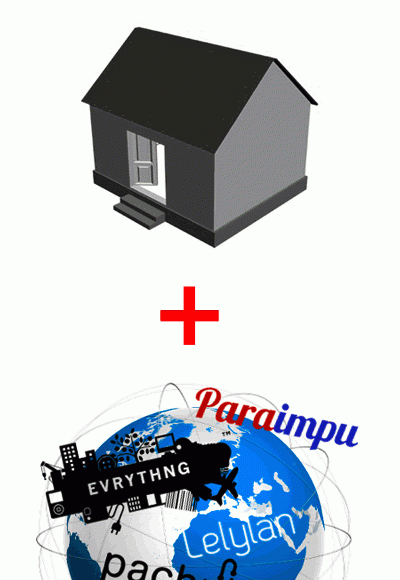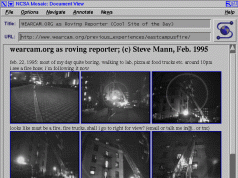The second decade of the 21st Century brings with it such an overwhelming barrage of I.P.-driven change it is easy to forget that disruptive technologies have always influenced the way we build societies and the cities they inhabit. In fact, we’d argue that technology and modernity, or today’s “liquid modernity,” are so tightly bound together they are inseparable.
Technologies like that being developed by Paraimpu increase that momentum.
The British Empire once ruled more land than any other nation in history. British engineering and the top-down systems it spawned changed the world. And all those systems had a home base. At the apex of the great empire was an equally great city.
London, the economic hub of colonialism, used its wealth to build a cultural identity worthy of the world’s dominant power. The publication and distribution networks centred on London’s Fleet Street pumped the ink needed to secure the empire’s identity. Mass production based printing gave newspapers a way to disseminate the idea of British culture everywhere. A global force, the British press endured for centuries, only recently seeing its influence eroded by new, disruptive, information technologies.
Like the British newspapers, today’s flagging empires are all too aware that centralized power loses strength when information is distributed more by bits than by atoms. Cities and city networks have seen their influence rise as the centralized power of empire wanes. That shouldn’t be a surprise. About a thousand cities now have populations greater than one-million people. Akin to the city-states of the past, these places often boast unique industrial clusters that differentiate them while also making them economically competitive on a global scale.
Layered over and perhaps coincidental with the rise of cities is the pervasiveness of information networks. Called by some the “Internet of Things,” there are now more smart, wired objects in the IOT network than there are people alive today. Based on the conceptual idea of the Internet, that means there are billions of “smart” objects in the world. Those objects aren’t pushing the power of information to one central point, but sharing it with networks that are increasingly open. If information is power, sharing information is power at the speed of light. We’ve built the anti-empire.
An important by-product of information and the rise of cities is a culture of innovation that is burying empire’s corpse under a massively changing world. Economists know that toppling established systems of production gained momentum about a generation ago. A small company in Redmond—Microsoft—illustrated that industrial power was shifting from the companies making things to the companies using software to empower people and their ideas. That empowerment and Microsoft’s success as a model, pushed the conditions needed for innovation out into the broader global network. New, Microsoft-like upstarts are ready ride the innovation wave of open data systems. What’s more, they no longer have to be part of a major industrial empire. Innovation is happening everywhere there is an Internet connection. It is bottom-up rather than top down.
Take upstart technology company Paraimpu for example. Based in Sardinia and founded by researchers at CRS4, Paraimpu wants to be the glue that holds the Internet of things together. Paraimpu is a variant of a Sardinian word derived from the Ancient Greek word paranymphos. It denotes a person who acts as a mediator in arranging a wedding between two persons—a connector. A small team of researchers—Antonio Pintus, Davide Carboni and Andrea Piras—wanted to explore this idea of mediation. Paraimpu was born. Its function is to connect physical and virtual things to the Web. This includes real objects from Arduino boards and sensors, up to entertainment appliances, existing social networks, APIs, software applications, services on the Web and, well, just about everything capable of “speaking” HTTP. The system provides a palette of supported objects helping users easily connect their objects to the system. I’ll let Paraimpu’s Antonio Pintus explain:
It’s always possible to create a connection between two objects despite their nature: physical or virtual, so it is possible to connect, for example a set of environmental sensors to facebook or to a stepper motor to drive or move something in real-time… Due to the very heterogeneous nature of objects, Paraimpu provides a rule-based powerful mechanism [needed]to adapt/transform/filter data flowing from an object to a connected one. E.g., if I connect a CO2 Sensor And I want to drive my appliance in order to reduce emissions (a motor for example), maybe I have to map and transform data which comes from the former before forwarding to the latter. Paraimpu adopts a rule engine and the users are able to write from simple to also very complex rules to do that, it’s a system responsibility to enforce these rules in real-time when data flows.
In other words, Paraimpu is a powerful but easy-to-use system. It adopts HTTP protocols to control the Internet of Things. Paraimpu is also a social service. Users can share their objects with other people. This feature avoids buying objects for the same purpose. For example, if I’ve bought a temperature sensor, installed it on my balcony, and connected it to the system, maybe other people in my city want the same data. Why force them to buy and install and connect the same object for the same purpose when it can be shared instead? Take a look at one of Paraimpu’s crowd-empowering urban projects. Tlight allows anyone with access to twitter to change the color tones and the behavior of the lights placed on the top of the big glass tower of a hotel in Sardinia.
Getting Time: 2012-01-13 03:22:15.415311 Chihyi88: #thotel red is the color Getting Time: 2012-01-13 03:21:32.461887 Chihyi88: #thotel blue is the color Getting Time: 2012-01-13 02:14:49.936760 AndreaMarras10: #thotel green Getting Time: 2012-01-13 01:38:52.377290 AndrewCarta: #thotel purple Getting Time: 2012-01-13 01:36:44.520180
Systems like Paraimpu and Arduino are in their infancy, but it is not hard to imagine that, like the fledgling Microsoft before them, they may just be a the right place at the right time to lead a revolution. That revolution is how we design, build, and use the MESH cities of the future.







